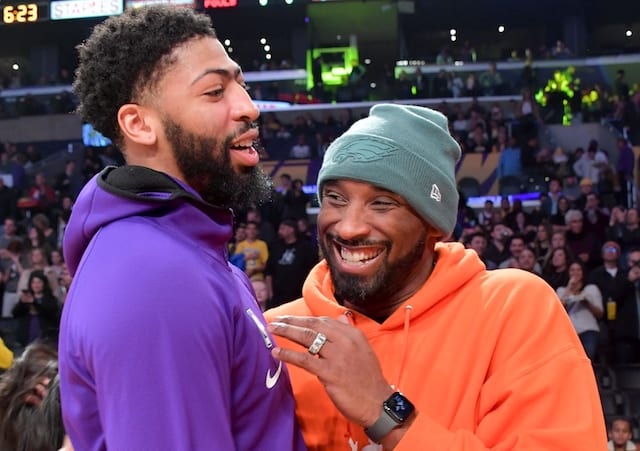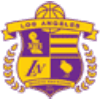The Los Angeles Lakers’ story is one of audacious moves and transformative trades in NBA history. Unlike teams that rely on gradual growth, the Lakers consistently reshape their destiny with headline-grabbing deals that bring in iconic talent. Their approach is rooted in risk-taking and an acute sense of timing, where ambition and boldness are just as celebrated as on-court achievement.
Throughout the decades, the Lakers have defined their identity by betting big, never shying away from seismic trades that could alter the franchise’s course. While some franchises rely on patience or draft picks, the Lakers have always been about seizing the moment—bringing in iconic names and betting their arrival would spark a new era, or rolling the dice like a craps online game and taking risks. In Los Angeles, opportunity doesn’t wait; it is chased, bargained for, and won at the negotiation table.
The significance of these high-stakes deals is measured not only by the trophies glimmering under the lights of Crypto.com Arena but also in the statues and retired jerseys, each representing a chapter shaped by calculated acquisition. These trades have ignited debates, fueled memories, and left a lasting imprint on generations of Lakers fans, making them central to the organization’s rich basketball tapestry.
Wilt Chamberlain Arrives: The Big Gamble of 1968
In 1968, Los Angeles pulled off a move few could have imagined by adding Wilt Chamberlain, already one of the most dominant big men in basketball. The price, which included key rotation players and precious draft assets, was steep. At the core, this was a gamble: Wilt was approaching the latter half of his career, and questions loomed about chemistry and opportunity cost. Yet, the trade instantly transformed the Lakers, giving them both overwhelming size and a superstar pedigree that perfectly suited the spectacle of Los Angeles.
Chamberlain’s arrival led the Lakers to four NBA Finals appearances in five years, with a long-awaited championship secured in 1972. His averages after joining the team—more than 19 points and 21 rebounds per game in his first season in Los Angeles—cemented his impact. Wilt gave the franchise a winning identity and proved that sometimes the most significant risks deliver the biggest rewards. The trade’s legacy endures in the championship banners that mark the start of a Lakers tradition of going all-in.
Kareem Abdul-Jabbar: The Move That Set the Stage
Seven years later, opportunity knocked again in the form of Kareem Abdul-Jabbar. Already established as perhaps the league’s most talented player, Kareem wanted a new stage, and the Lakers provided it. Acquiring him from the Milwaukee Bucks cost the team several promising young players and future picks, but the investment paid off immediately. Besides instantly turning Los Angeles into a perennial contender, the move redefined what it meant to be the centerpiece of a rebuilding team.
Over the next decade and a half, Abdul-Jabbar led the Lakers consistently, winning multiple MVPs and anchoring the post for a franchise about to experience its most successful run. His skyhook became emblematic of Lakers basketball, and his combination with Magic Johnson, who arrived three years later, set the foundation for the “Showtime” era. Kareem’s arrival wasn’t just about numbers or star power but about putting the pieces in place for a dynasty.
Kobe Bryant: A Teenage Gamble That Became a Legend
Of all the transactions in Lakers lore, few are remembered as fondly—or as fatefully—as the 1996 Draft Day deal that brought Kobe Bryant to Los Angeles in exchange for sending center Vlade Divac to Charlotte. The Lakers bet on a 17-year-old with enormous potential but unproven NBA credentials. At the time, the move was seen as high-risk, offering a reliable veteran at the expense of stability.
Bryant swiftly defied expectations. He evolved from prospect to cornerstone, capturing five championships, earning MVP honors, and defining an era with his competitive drive and elegance on the court. His career became a testament to long-term vision and audacity in the front office. Looking back, the trade is a vivid example of what can happen when teams trust their scouting and intuition, risking present comfort for the chance at historic greatness.
Pau Gasol: The Final Piece for Another Banner
A decade later, the Lakers faced a familiar problem: a talented roster led by Kobe Bryant and coached by Phil Jackson, but missing that crucial second star. The 2008 acquisition of Pau Gasol from Memphis—completed in exchange for a package featuring young players and draft compensation—addressed that need. Gasol brought finesse, intelligence, and selflessness to the court, skills that proved invaluable next to Bryant’s assertiveness.
Gasol’s arrival propelled the Lakers to three consecutive NBA Finals, resulting in back-to-back championships in 2009 and 2010. He averaged more than 17 points and nine rebounds per game with the Lakers and was pivotal in several clutch postseason performances. The trade’s true value was in its timing: when the Lakers were good but not great, it provided the missing ingredient that turned hope into hardware. The debate about the fairness of the trade has long since faded, replaced by recognition of Gasol’s role in cementing the Lakers’ place in the modern NBA hierarchy.
Anthony Davis: Bubble Championship Is Still a Championship
Sometimes, the value of a trade is measured in the rings it brings. When the Lakers sent a massive package of talented young players and draft picks to acquire Anthony Davis from the New Orleans Pelicans in 2019, expectations were sky-high—and immediately justified. The three-team trade that saw Davis land in Los Angeles added the perfect complement to LeBron James: a potent scorer, elite defender, and clutch performer.
The 2020 season, interrupted by a global pandemic and concluded in the Florida “bubble,” posed unique challenges. Yet Davis’s presence pushed the Lakers over the top, leading to a championship in a year that demanded resilience and adaptability. His impact extended beyond stats; Davis’s ability to anchor the defense and take over offensively provided the margin the Lakers needed. While critics debate the circumstances of the “bubble” title, the reality remains: Davis delivered when it mattered, marking another chapter where a single trade changed the course of Lakers history.
Trades as Turning Points
Looking back, these trades are more than transactions—defining moments. Each was a roll of the dice, balancing calculated risk with the potential for enduring success. Whether bringing in an aging star, betting on youthful potential, or searching for the final complementary piece, the Lakers’ willingness to act has shaped the franchise’s identity.
Not every move leads to a title, and not every gamble pays off, but in Lakers history, these five trades stand out as the moments fate was redirected. In the ongoing conversation about great deals and near-misses, it’s clear that the Lakers’ boldness—much like trying one’s luck at online craps—remains woven into the team’s DNA. The future will undoubtedly bring more trades, debates, and surprises, keeping alive the dynamic tradition of risk and reward that defines Los Angeles basketball.





